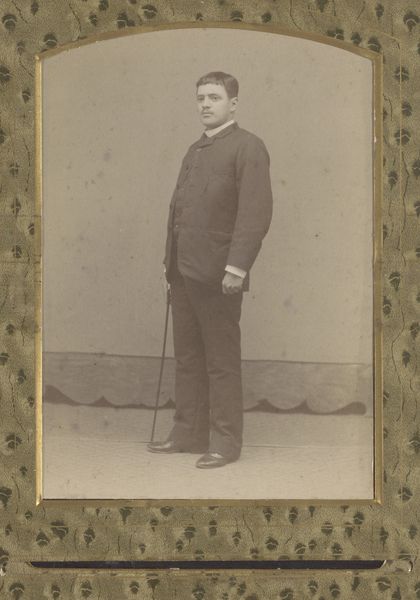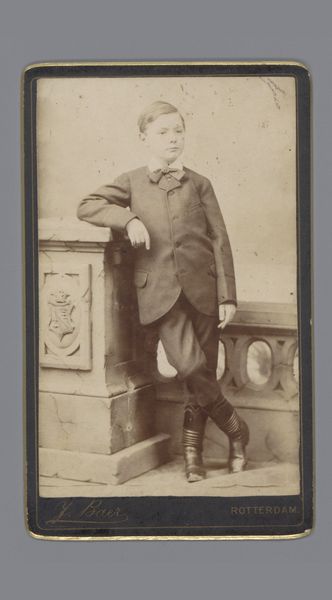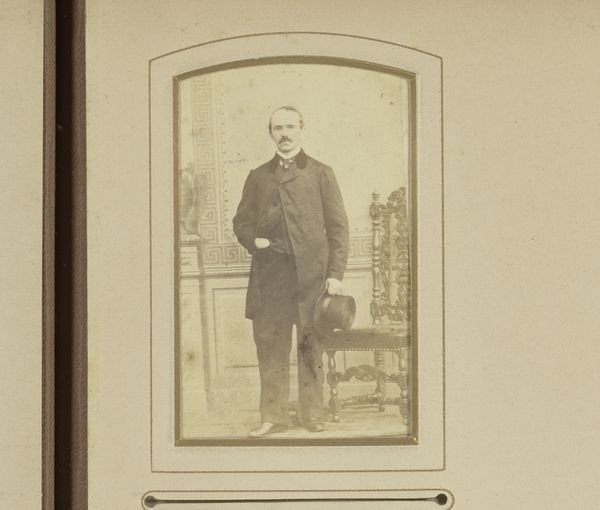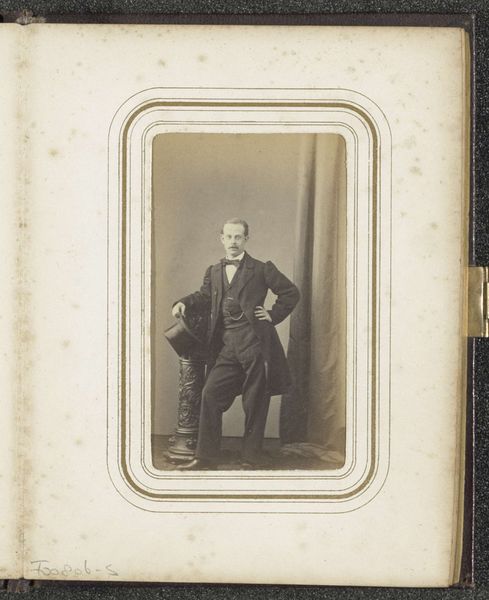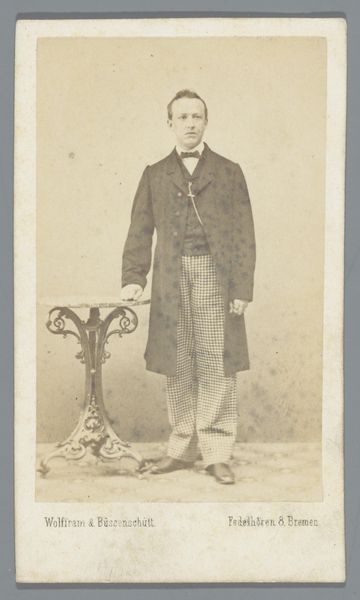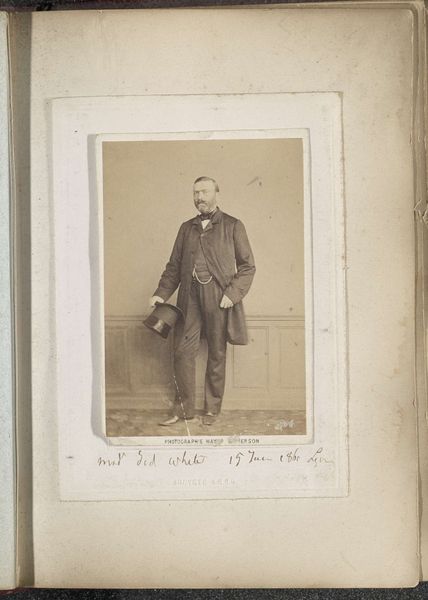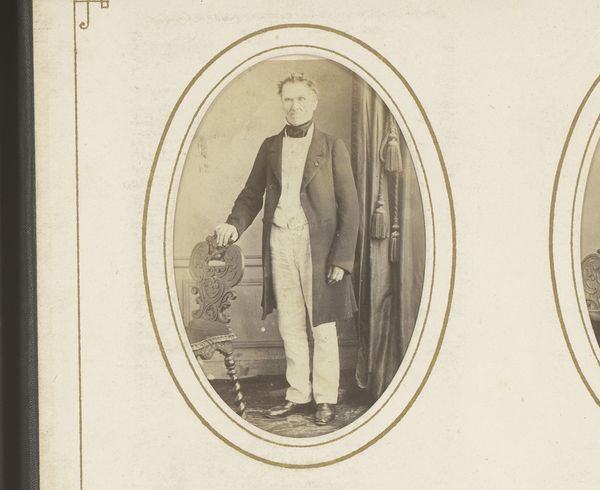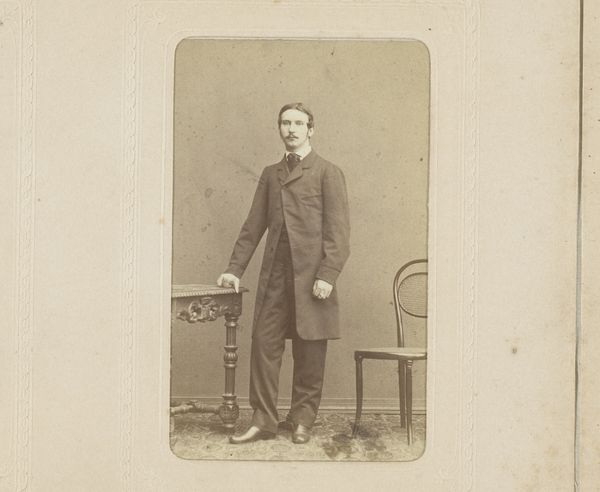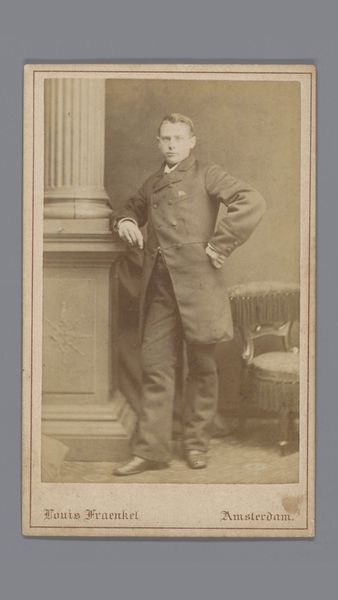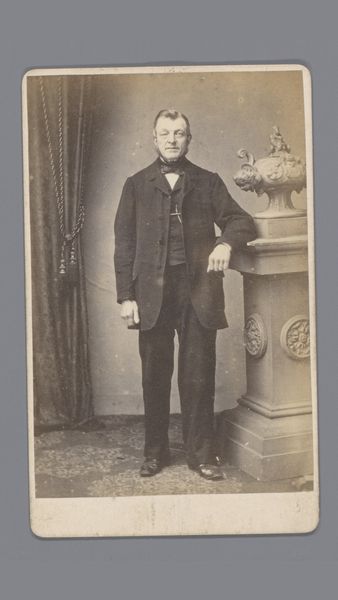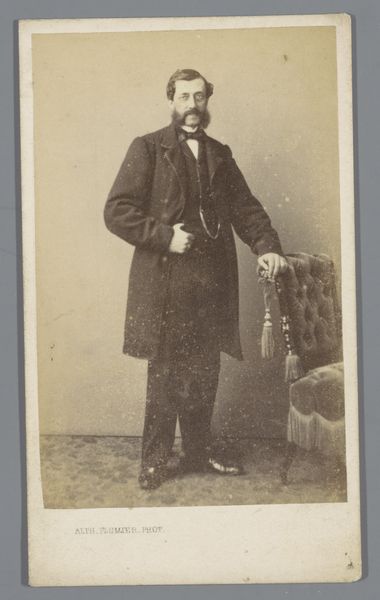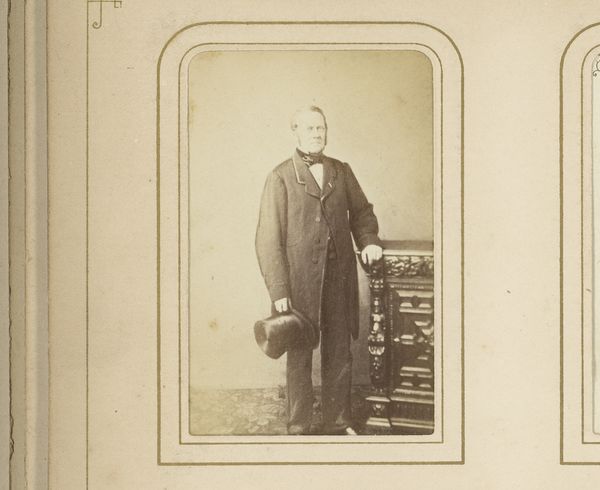
daguerreotype, photography
#
daguerreotype
#
photography
#
historical photography
#
19th century
Dimensions: height 83 mm, width 50 mm
Copyright: Rijks Museum: Open Domain
Curator: Here, in the Rijksmuseum’s collection, is a daguerreotype titled "Portret van een man met wandelstok en hoge hoed," created around 1863 by Ghémar Frères. Editor: Oh, he seems rather proper! Very serious. I imagine him striding purposefully down a cobblestone street, perhaps late for an important meeting about… trade routes or railways, something impactful! There's a certain determined air about him. Curator: The medium is significant, isn’t it? The daguerreotype process, while pioneering, demanded long exposure times. This likely shaped the subject's carefully maintained posture and expression, reflecting the performative aspects of early photography and portraiture—social status was deliberately asserted. Editor: That's true. Imagine having to stay still for so long! Although, maybe there’s something rather theatrical in knowing you’re becoming part of posterity. Like this very considered presentation, his grip on the hat and cane...It suggests careful construction of image, of persona. I find myself wondering what he was really thinking under that facade! Curator: I find myself questioning the access afforded to these types of portraits; and indeed, who was conspicuously absent, given financial and technological constraints. Who was purposefully kept outside of the frame of technological 'progress'? Editor: Yes! A critical lens is necessary – this photo could mask the exploitation underpinning this era! Although I do appreciate the aesthetics. The limited tonal range…almost ethereal! Curator: I concur with the careful balance: it speaks to larger aesthetic considerations. And the presence of props such as the walking stick, and high top hat—visual cues to his identity. We begin to construct this story around this man and that singular, frozen, moment. Editor: It's incredible how a seemingly simple image holds such depth. From initial impressions to complex cultural contexts, there are endless stories contained within it. It's like, he existed, we exist, time unfolds… and that unfolds because art unfolds too, and it’s beautiful really, isn't it? Curator: Indeed. And situating art within an intersectional framework only expands these narratives. Art not just as object, but as a site of cultural inquiry, opens avenues to more critical conversations.
Comments
No comments
Be the first to comment and join the conversation on the ultimate creative platform.
